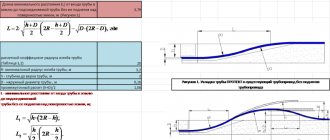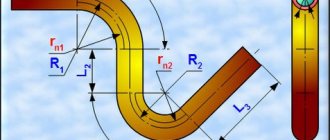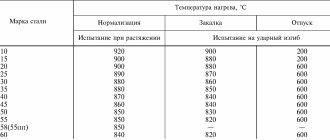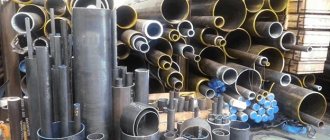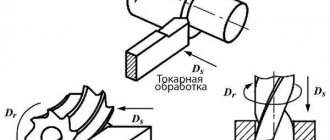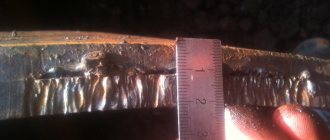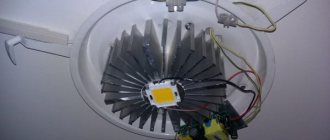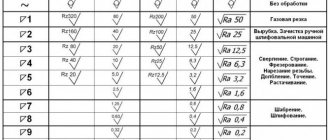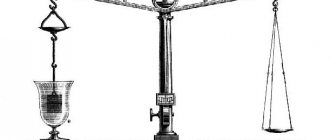Calculation of heat transfer coefficients online
When calculating heat exchangers, analyzing the thermal balance of operating equipment, estimating heat losses and solving many other heat transfer problems, it is often necessary to calculate the heat flow passing through a solid wall separating liquids or gases at different temperatures, which in the simplest case is calculated using the formula:
K - coefficient heat transfer;
Tf1, Tf2 - temperatures of liquid or gas between which heat exchange occurs
As can be seen, the greatest difficulty here is the determination of the heat transfer coefficient k, which depends on the physical properties of the coolant, the flow regime and the thermal conductivity coefficient of the solid wall. The heat transfer coefficient of a flat wall can be expressed in terms of the heat transfer coefficients of the wall surfaces:
α1, α2 are the heat transfer coefficients of the wall surfaces;
λ—wall thermal conductivity coefficient;
By calculating heat transfer coefficients, this page allows you to calculate heat flow, power transferred, heat transfer coefficient and temperature of a flat or cylindrical wall.
What systems require calculations?
The heat transfer coefficient is calculated for heated floors. This system is made less and less often from steel pipes, but if products made from this material are chosen as coolants, then calculations must be made. The coil is another system, when installing which it is necessary to take into account the heat transfer coefficient.
Radiator made of steel pipes
Registers are presented in the form of thick pipes connected by jumpers. The average heat output of 1 meter of this design is 550 W. The diameter ranges from 32 to 219 mm. The structure is welded so that there is no mutual heating of the elements. Then heat transfer increases. If you assemble the registers correctly, you can get a good room heating device - reliable and durable.
Knowledge base on 3D design in Pro/Engineer, Creo, Solidworks, electronics on STM32
CAD training. Important parameters of some materials used in thermal calculations
This table presents such important parameters as Thermal conductivity coefficient λ
and
Specific Heat Capacity cp
, which are necessary for thermal calculations according to the articles Creo 3. Calculation of a cooling radiator with forced ventilation and Solidworks 2013. Thermal calculation of a cooling radiator with forced ventilation in Solidworks Simulation.
| Material | Thermal conductivity coefficient λ, W/(m•K) | Specific heat capacity sr, J/(kg•K) |
| Aluminum (pure) | 208 (at 25 °C) 216 (at 100 °C) | 902 (at 25 °C) 938 (at 100 °C) |
| Duralumin D16 | 130 (at 100 °C) | 922 (at 100 °C) |
| Alloy 2024 heat treatment T4 or T351 (analogue of duralumin D16) | 121 (according to matweb.com) | 875 (according to matweb.com) |
| AMg6 alloy | 122 (at 100 °C) | 922 (at 100 °C) |
| Alloy AD31 (for coolers) | 188 (at 100 °C) | 921 (at 100 °C) |
| Alloy 6063 heat treatment T6 (similar to AD31) | 209 (SolidWorks) 200 (according to matweb.com) | 900 (according to matweb.com) |
| Copper M1 (for coolers) | 387 (at 20 °C) | 390 (at 20 °C) |
| Copper C11000 or Cu-ETP DIN (analogue M1) | 388 (at 20 °C) 380 (at 100 °C) according to matweb.com | 385 (according to matweb.com) |
| Brass LS59-1 | 104.7 (at 20 °C) | 376.8 (at 100 °C) |
| Brass L63 | 104.7 (at 20 °C) | 376.8 (at 100 °C) |
| Brass C33500 or CuZn37 DIN (analogous to L63) | 115 (at 20 °C) according to matweb.com | — |
| Steel 12Х18Н10Т | 15 (at 25 °C) 16 (at 100 °C) | 462 (at 100 °C) |
| Steel 321 (analogue 12Х18Н10Т) | 16.1 (at 100 °C) according to matweb.com | 500 (at 100 °C) according to matweb.com |
| Steel 316L | 14.0-15.9 (according to matweb.com) | 500 (at 100 °C) according to matweb.com |
| Steel 10 | 57 (at 100 °C) according to matweb.com | 494 (at 100 °C) according to matweb.com |
| Steel 1010 (similar to steel 10) | 49.8 (according to matweb.com) | 448 (at 100 °C) according to matweb.com |
The following table shows the convection coefficients h or α
(otherwise known as
Convective Heat Transfer Coefficients
and
Convective Heat Transfer Coefficients
) required for evaluation calculations
Source
Theory, algorithms, literature.
Pipes in heat supply systems can perform two functions - transport the coolant to the place of its use and serve as a heating device (register) themselves.
When implementing any of the above functions, it is necessary to quantitatively assess the effectiveness of its implementation.
The main indicators for thermal energy transport systems are defined by regulatory documents SO 153-34.20.523-2003 in 4 parts.
In any case, there is a need for prompt and accurate calculations:
- parameters of heat exchange between the pipe and its environment;
- energy costs for transporting the coolant (water) through the pipe.
Heat transfer from a bare pipe
The parameters, the knowledge of which allows one to calculate thermal processes in the “water-pipe-air” system, are collected and shown in the source data block of the table from the previous part of the article.
The figure below shows the equivalent heat transfer diagram of a bare pipe.
When calculating the heat transfer of a pipe, it is convenient to use the method of analogy between thermal engineering and electrical engineering, assuming:
- temperature difference dt = t water - t air , as the difference in electrical potentials;
- heat flow q as electric current;
- thermal resistance Rt is like electrical resistance.
By analogy with Ohm's law, we obtain the following equation:
q = dt / Rt =( t water - t air )/( R in + R tr + R out ) , W.
Thermal resistance between two media - water and air - prevents all forms of heat exchange between them:
Each of the listed forms of heat transfer has its own specifics and is described by corresponding analytical expressions.
1. Convective heat exchange between moving water and a solid cylindrical wall
R in =1/(αin · F in ) – thermal internal resistance, °C/W, where:
- αin – average heat transfer coefficient along the length of the pipe from moving water on the inner surface of the pipe, W/(m²·°С);
- F int - area of the wetted inner wall of the pipe, m².
Calculation of heat transfer coefficients
The intensity of heat transfer depends on the dynamic type of flow, which determines the structure of the boundary layer near the heat exchange surface, which in turn depends on the flow velocity. An increase in flow velocity leads to a decrease in the boundary layer, increases turbulence and leads to an increase in heat transfer intensity.
Heat transfer also depends on the characteristics of the coolant. High thermal conductivity reduces the thermal resistance of the boundary layer and increases heat transfer.
Reducing the viscosity of the liquid reduces the boundary layer, which also has a beneficial effect on the heat exchange between the surface and the coolant flow.
A decrease in the boundary layer also occurs in the case of an increase in kinematic viscosity or an increase in the density of the working medium, which also increases heat transfer.
Also, the intensity of heat transfer depends on the heat capacity of the liquid. As the heat capacity increases, heat transfer also increases, since a liquid with a higher heat capacity is able to transfer more heat.
Additional factors affecting heat transfer are the shape of the heat transfer surface, chemical reactions and phase transitions in the coolant.
Online calculations performed in this section include the determination of heat transfer coefficients for the most common cases: a flat surface, the inner and outer walls of a pipe, as well as the calculation of the heat transfer coefficient for the outer surface of a group of parallel pipes. For the calculation, it is necessary to set the determining dimensions of the surfaces, their temperature, coolant temperature, flow rate, as well as such characteristics of the working medium as dynamic viscosity, density, thermal conductivity and specific heat.
Pipe insulation
If in heated rooms everything is done in order to take as much heat as possible from the pipe, then in the main lines there is a completely opposite need - to reduce heat transfer to the maximum.
For this purpose, pipe insulation is used.
The market for materials for these purposes is quite extensive, so there are no problems with choosing insulation. In addition to the cheapest fiberglass insulation, basalt wool, polyurethane foam, and expanded polystyrene are used.
The heat transfer of steel pipes can be most effectively reduced in factory conditions. The production of pipes with a layer of insulation and polyethylene is constantly increasing; today, installing heating lines from such materials is one of the best ways to reduce heat loss.
As you can see, knowledge of actual heat transfer is necessary to solve many technical problems associated with the construction of hot water supply and heating systems. Therefore, when designing these systems, be sure to perform such calculations, or even better, entrust this to a specialist.
Calculation of the heat transfer coefficient of a flat wall
You can calculate the heat transfer coefficient of a flat surface using the similarity equation:
Nul = 0.66×Rel 0.5×Pr 0.33; with a laminar boundary layer
Nul = 0.037×Rel 0.8×Pr 0.43; with a turbulent boundary layer
Rel is the Reynolds number, Pr is the Prandtl number.
Initial data:
L is the surface size in the direction of flow, millimeters;
w—flow velocity, meters per second;
μ—dynamic viscosity of the coolant, in pascal×second;
ρ—coolant density, in kilograms/meter 3;
λ—coefficient of thermal conductivity of the coolant, in watts/meter×°C×sec;
Cp is the specific heat capacity of the coolant, in joules/kilogram×°C.
HEAT TRANSFER COEFFICIENT OF A FLAT WALL
Dynamic viscosity, μ, Pa*s
Coolant density, ρ, kg/m 3
Thermal conductivity, λ, W/(m* 0 C×sec)
Specific heat capacity, Cp, J/(kg* 0 C)
Source
We make a calculation
The formula by which heat transfer is calculated is as follows:
- K – thermal conductivity coefficient of steel;
- Q – heat transfer coefficient, W;
- F is the area of the pipe section for which the calculation is being made, m 2 dT is the value of the temperature pressure (the sum of the primary and final temperatures taking into account room temperature), ° C.
The thermal conductivity coefficient K is selected taking into account the area of the product. Its size also depends on the number of threads laid in the premises. On average, the coefficient is in the range of 8-12.5.
Heat transfer coefficient surface - air
The article discusses the calculation of the power of heat flow from horizontal and vertical flat surfaces of a body placed in a “dimensionless” air space during forced and natural convection, taking into account the radiation component of heat transfer.
Knowing the heat transfer coefficient on the surface ( α ) separating the solid body and the air space surrounding this body, it is very simple to determine the heat flow power ( Q ) from the known temperature difference ( Δt ).
Q = α * A * Δt , W – heat flow power from or to the surface of the body.
- α = α k + α r , W/(m 2 *K) – total heat transfer coefficient at the air-body surface α k =? , W/(m 2 *K) – convective heat transfer coefficient
- α р= ε *5.67*10 -8 *((tп+273.15) 4 - (tп+273.15) 4 )/(tп-tв)) , W/(m 2 *K) – coefficient radiation heat transfer (heat transfer by radiation), ε – degree of surface emissivity
- tп , °C – surface temperature
The main difficulty of the calculation lies in determining the convective heat transfer coefficient ( α k )! Excel will help you automate the solution of this time-consuming task first.
The instability of the process of natural convection near surfaces of various shapes and locations in space has given rise to a wide variety of empirical formulas for calculating the convective heat transfer coefficient ( αc ) . Inevitable errors in experimental data have led to the fact that the results of calculations for the same surfaces and conditions according to the formulas of different authors differ from each other by 20% or more.
After a thorough detailed review of the materials of modern Western publications on heat transfer (the list of references is at the end of the article), formulas recommended for use by most authors were selected for use in the Excel program presented below.
Heat transfer schemes:
The figures below show 8 circuit options for which the program can perform calculations.
The pink color of the plates indicates that they are hotter than the surrounding air. Blue color – the plates are colder than the air.
In diagrams 1a and 1b, air is forced to move (fan, wind) along the surface of the plate, regardless of its orientation in space. In all other diagrams, the surrounding air is in a calm state (room, complete calm), and the position of the plates is oriented in space.
Calculation in Excel:
Program algorithm formulas:
t =( t in + t p )/2
l = L – for schemes 1a and 1b
l =(B*L)/(2*( B + L )) – for schemes 2a, 2b, 3a, 3b, 4a, 4b
To determine the thermophysical parameters of air at the defining temperature ( t ) in the range -70°C ... +1200°C, formulas from the previous article on the site were used.
Re= w * l /ν
Gr = g *β*| t p - t in |* l 3 /ν 2
Ra = Gr * Pr
α k = Nu *λ/ l
α р= ε *0.00000005670367*((tп+273.15) 4 - (tп+273.15) 4 )/(tп-tв)) – at t in *) α р= – at t in >t P
α = α k + α r
q=α*( t p -t in )
*) Heating of surfaces by the Sun or other sources of thermal radiation is ignored by the program.
Calculation of the thermophysical parameters of air and the Nusselt number, as can be seen from the above formulas, are the key and most labor-intensive in determining the convective heat transfer coefficient.
The program was tested using examples from the books presented at the end of the article. The deviations of the results generally did not go beyond ±5%.
Comment:
In the domestic heat engineering literature, formulas of the second half of the last century by M.A. are widely used to solve the problems considered. Mikheev and V.P. Isachenko, which are not mentioned in modern Western literature. A quick comparative analysis of the calculation results using the formulas of different authors gave contradictory and ambiguous answers. If with forced convection the results are virtually identical, then with natural convection they sometimes differ by 30% or more, but sometimes they are almost the same...
Literature:
- John H. Lienhard IV, John H. Lienhard V, A Heat Transfer Textbook (Fifth Edition), 2022.
- Frank Kreith, Raj M. Manglik, Mark S. Bohn, Principles of heat transfer (Seventh Edition), 2011.
- Adrian Bejan, Convection Heat Transfer (Fourth Edition), 2013.
- Michel Favre-Marinet, Sedat Tardu, Convective Heat Transfer, 2009.
- Harlan H. Bengtson, Convection Heat Transfer Coefficient Estimation, 2010.
- Rajendra Karwa, Heat and Mass Transfer, 2022.
- Stuart W. Churchill, Humbert H. S. Chu, Correlating equations for laminar and turbulent free convection from a vertical plate, International Journal of Heat and Mass Transfer, Volume 18, Issue 11, November 1975.
- https://people.csail.mit.edu/jaffer/SimRoof/Convection/
- I. I. Kirvel, M. M. Brazhnikov, E. N. Zatsepin ENERGY SAVING IN HEAT TRANSFER PROCESSES, 2007.
I ask those who respect the author’s work to download the file with the program after subscribing to article announcements!
Convection and total heat exchange.
Convection heat transfer.
Convection is the transfer of heat in liquids, gases or granular media by flows of matter.
It is actually a combination of diffusion and random movement of molecules. Near the surface, the flow velocity is low, but diffusion increases. As you move away from the surface, the random movement increases.
Convective heat transfer occurs:
- forced or forced convection;
- natural convection;
Forced or forced convection
Forced convection occurs under the influence of external forces, such as a fan.
Natural convection
Natural convection occurs spontaneously in a substance when it is unevenly heated in a gravitational field. With such convection, the lower layers of the substance heat up, become lighter and float, and the upper layers, on the contrary, cool, become heavier and sink down, after which the process is repeated again and again.
Boiling or condensation processes are also considered convection heat transfer processes.
- The transfer of heat per unit surface area was first described by Newton and is called Newton's law of cooling.
Convection equality:
q = heat transferred per unit time (W, W)
A = surface area (m2, m2)
k = heat transfer coefficient (W/m 2 K or W/m 2o C, W/m 2 K or W/(m 2 * o C))
dT = temperature difference between surface and working fluid (K or o C)
Heat transfer coefficients
- 1 W/m 2 K = 0.85984 kcal/hm 2 o C = 0.1761 Btu/ ft 2 ho F
- 1 Btu/ft 2 ho F = 5.678 W/m 2 K = 4.882 kcal/hm 2 o C
- 1 kcal/hm 2 o C = 1.163 W/m 2 K = 0.205 Btu/ ft 2 ho F
- Btu - British Thermal Unit (BTU) = 1,055.05585 Joule;
- kcal = kcal (kilocalorie);
- h (hour) = h (hour);
- ft - foot = 30.48 centimeters;
Heat transfer coefficient
The heat transfer coefficient - k - depends on the type of working fluid, gas or liquid, on fluidity properties, such as speed, viscosity and other temperature and fluid properties.
In general, the heat transfer coefficient for common liquids and gases fluctuates in a certain range:
Example - convection
A liquid with an average volume temperature of 50 o C washes a flat surface measuring one meter by one meter. Surface temperature 20 o C. Heat transfer coefficient 2,000 W/(m 2 * o C)
.
Heat transfer graph.
Total heat transfer coefficient. Thermal and thermal resistance.
The total heat transfer coefficient for walls or heat exchangers can be calculated as:
U = total heat transfer coefficient (W/m 2 K)
A = heat exchange surface area for each side (m2)
k = thermal conductivity of the material (W/mK)
h = heat transfer coefficient for each working medium (W/m 2 K)
Thermal conductivity - k - for several materials: .
- PP-Polypropylene - 0.12 W/mK
- Stainless steel - 21 W/mK
- Aluminum - 221 W/mK
Heat transfer coefficient
- h - depends on
- types of working medium - gas or liquid
- flow properties such as speed, e.g.
- other temperature and flow properties
Heat transfer coefficient for several common fluids:
- Air - 10 to 100 W/m 2 K
- Water - 500 to 10,000 W/m 2 K
Thermal resistance (thermal)
The overall heat transfer coefficient can also be calculated by estimating thermal resistance (thermal). The wall is divided into zones with different thermal (thermal) resistance, where
- heat exchange between the 1st working medium and the wall is described by one coefficient of thermal (thermal) resistance
- heat transfer through the wall is described by the second coefficient
- the exchange between the wall and the second working medium is described by the third coefficient
Surface coatings or layers of burnt products provide additional thermal (thermal) resistance to the wall, thereby reducing the overall heat transfer coefficient.
- Rt - thermal (thermal) resistance in a section of the thermal circuit, K / W
- T2 — temperature of the beginning of the section, K
- T1 — temperature of the end of the section, K
- P - heat flow flowing through a section of the circuit, W
Example - Heat exchange in a heat exchanger
A flat heat exchanger transfers heat from working medium A to working medium B. The thin wall thickness is 0.1 mm and the material is either PP-Polypropylene, aluminum or stainless steel.
Working fluids A and B are air with a heat transfer coefficient hair = 50 W/m 2 K.
The total heat transfer coefficient U per unit area is expressed as:
Using the data below you can calculate the total heat transfer coefficient for:
- PP-Polypropylene: U = 24.5 W/m 2 K
- Steel: U = 25.0 W/m 2 K
- Aluminum: U = 25.0 W/m 2 K
Arithmetic mean temperature difference. (Arithmetic Mean Temperature Difference - AMTD
), Logarithmic Mean Temperature Difference (
LMTD
or
DTLM
).
The arithmetic mean temperature difference and the logarithmic mean temperature difference are used to evaluate heat transfer during the convection heat transfer process.
- During the heat transfer process, the temperature difference changes as the fluid passes through the heat exchanger and as a function of residence time (flow rate).
Average temperature difference.
The average temperature difference during the heat transfer process depends on the direction of the fluid flow involved in the process. The main and secondary fluids in the heat transfer process can
If the working fluid in the primary circuit is saturated steam, then the primary temperature can be considered constant, since the heat transfer process occurs as a result of a change in the state of aggregation. The temperature curve of the primary flow is independent of the flow direction.
Logarithmic Mean Temperature Difference ( LMTD)
or
DTLM
).
The change in temperature of the working medium in the secondary circuit is nonlinear. That is why it is better to present it in logarithmic form:
LMTD = Average logarithmic temperature difference ( o F, o C)
dti = tpi - tsi = difference in incoming temperatures of the primary and secondary circuits. ( i nlet p rimary and s econdary) ( o F, o C)
dto = tpo - tso = difference in leaving temperatures of the primary and secondary circuit. ( o utlet p rimary and s econdary) (o F, o C)
The average logarithmic temperature difference is always less than the arithmetic average temperature difference.
Arithmetic mean temperature difference. (Arithmetic Mean Temperature Difference - AMTD
)
A simpler, but less accurate way to calculate temperature differences.
AMTD = Arithmetic mean temperature difference ( o F, o C)
tpi = primary circuit inlet temperature ( i nlet p rimary) ( o F, o C)
tpo = primary circuit outlet temperature ( o utlet p rimary) ( o F, o C)
tsi = secondary circuit input temperature ( i nlet s econdary) ( o F, o C)
tso = secondary circuit outlet temperature ( o utlet s econdary) ( o F, o C)
The arithmetic mean temperature difference will give a satisfactory approximation for the mean temperature difference when the smallest difference between the inlet and outlet temperatures is greater than half the largest difference between the inlet and outlet temperatures.
When heat is transferred as a result of a change in phase state (condensation or evaporation), the temperature of the primary and secondary circuits remains constant.
Example - Arithmetic and logarithmic average temperature difference, Hot water heats air
Hot water at 80 o C
heats the air from
0 o C
to
20 o C
in a parallel heat exchange flow.
The water leaves the heat exchanger at a temperature of
60 o C.
The arithmetic mean temperature difference is calculated:
The average logarithmic temperature difference is calculated:
LMTD = ((60 o C) - (20 o C)) - ((80 o C) - (0 o C))) / ln(((60 o C) - (20 o C)) / ((80 o C) — (0 o C)))
PS (01.11.2020)
Addition on natural convection near a vertical surface:
If you plot graphs using the above Churchill and Chu formulas for the Nusselt number during natural convection near a vertical isothermal surface (Schemes 2a and 2b), you can see that at Ra = 10 9 the curves do not coincide!
On this occasion, the authors of the formulas, Churchill and Chu, give approximately the following explanation: “the equation based on the research of Churchill and Usagi Nu=(0.825+0.387*Ra 1/6 /(1+(0.492/Pr) 9/16 ) 8/27 ) 2 gives good results for the average free convection heat transfer of an isothermal vertical plate over the entire range of values of Ra and Pr from to ∞ , even if it does not work to indicate a discrete transition from laminar to turbulent flow.” The Lienhards in [1] note that the equation under consideration is slightly less accurate for laminar conditions at Ra 9 and recommend in this range to use the first equation of the same authors Nu=0.68+0.67*Ra ¼ /(1+(0.492/Pr ) 9/16 ) 4/9 . Although, judging by the graphs, in the Ra 7 for air both functions are extremely close to each other.
Another nuance that was encountered only by the Lienhards in [1]: “the properties of the fluid should be assessed at t=( t in + t p )/2 with one exception, if the fluid is a gas, then the volumetric expansion coefficient β should be determined at t= t in ". But the authors of the dependencies themselves, Churchill and Chu, do not write anything about such a condition. In this regard, their paper [7] states that “for large temperature differences, when the physical properties differ significantly, Eade recommends estimating the physical properties as the average of the surface and volume temperatures, and Wiley gives more detailed theoretical guidance for the laminar boundary layer regime "
Maximum relative error for Nu=(0.825+0.387*Ra 1/6 /(1+(0.492/Pr) 9/16 ) 8/27 ) 2 if β=1/ t in instead of β=2/( t in + t p ) is expressed as a percentage:
ε=(( ( t in + t p )/(2* t in )) 1/3 -1)*100% , or
ε=((| ( t p — t in )|/(2* t in )+1) 1/3 -1)*100%
As can be seen from the graph, at the temperature of the medium - air tв = 20 ° C = 293.15 K and with a difference in surface and air temperatures Δ t = | t p - t in | 90 °C the discrepancy between results increases rapidly.
Are the Lienhards right or many other authors who calculate all the properties of fluids at one value of the determining temperature t=( t in + t p )/2 ? I don't have a definite answer.
(Based on materials from Aubrey Jaffer [8].)
We calculate the return for 1 m of product
It is easy to calculate the heat transfer of 1 m of pipe made of steel. We have a formula, all we have to do is substitute the values.
Q = 0.047*10*60 = 28 W.
- K = 0.047, heat transfer coefficient;
- F = 10 m2, pipe area;
- dT = 60° C, temperature difference.
It's worth remembering
Do you want to make a heating system correctly? You should not select pipes by eye. Heat transfer calculations will help optimize construction costs. In this case, you can get a good heating system that will last for many years.
Source
